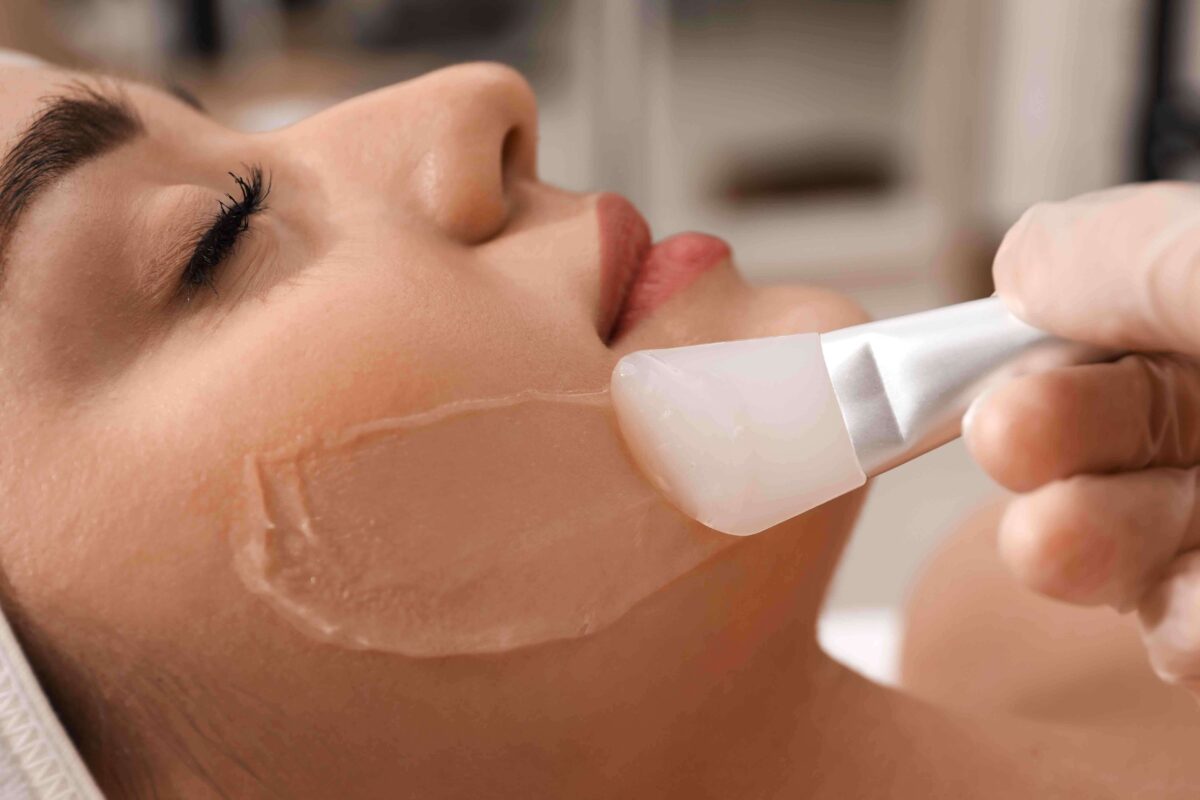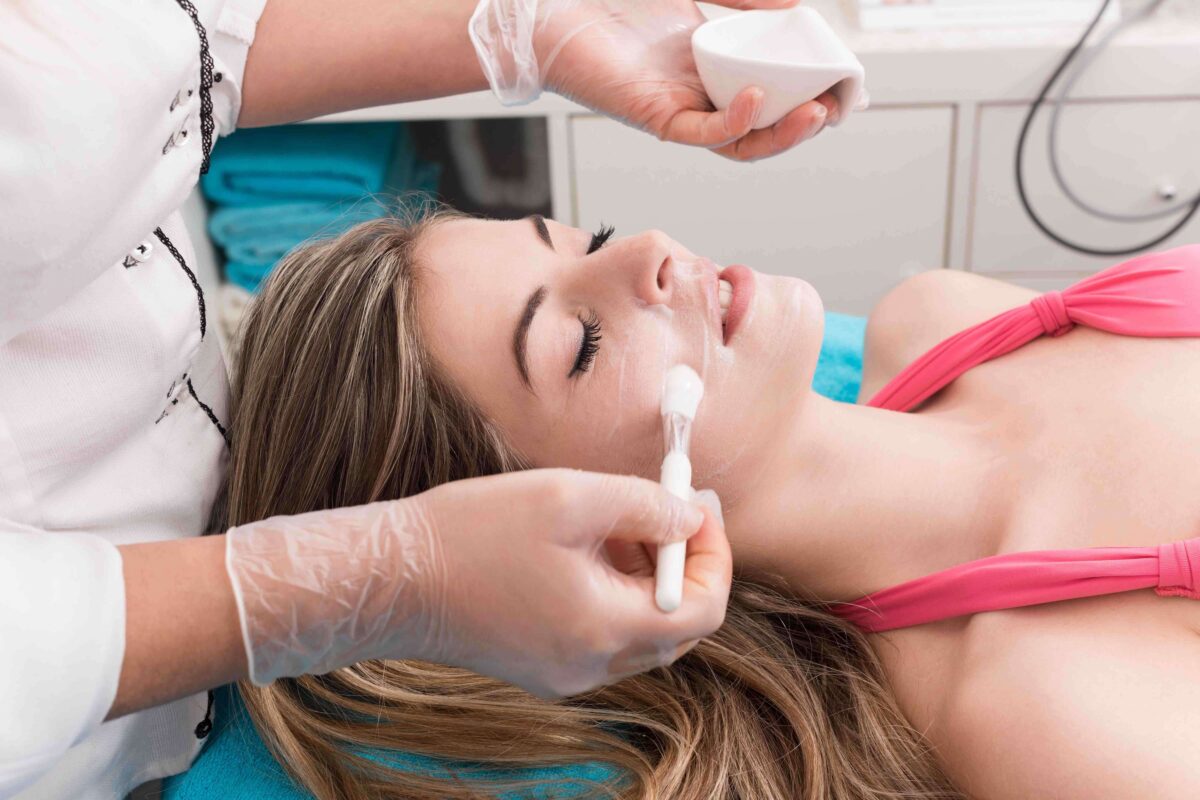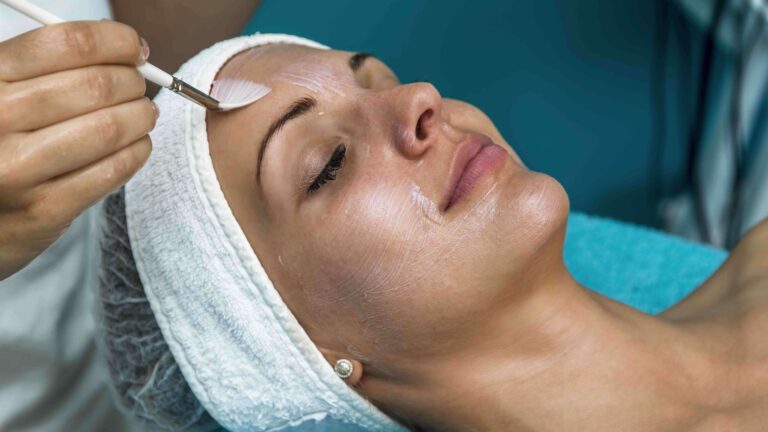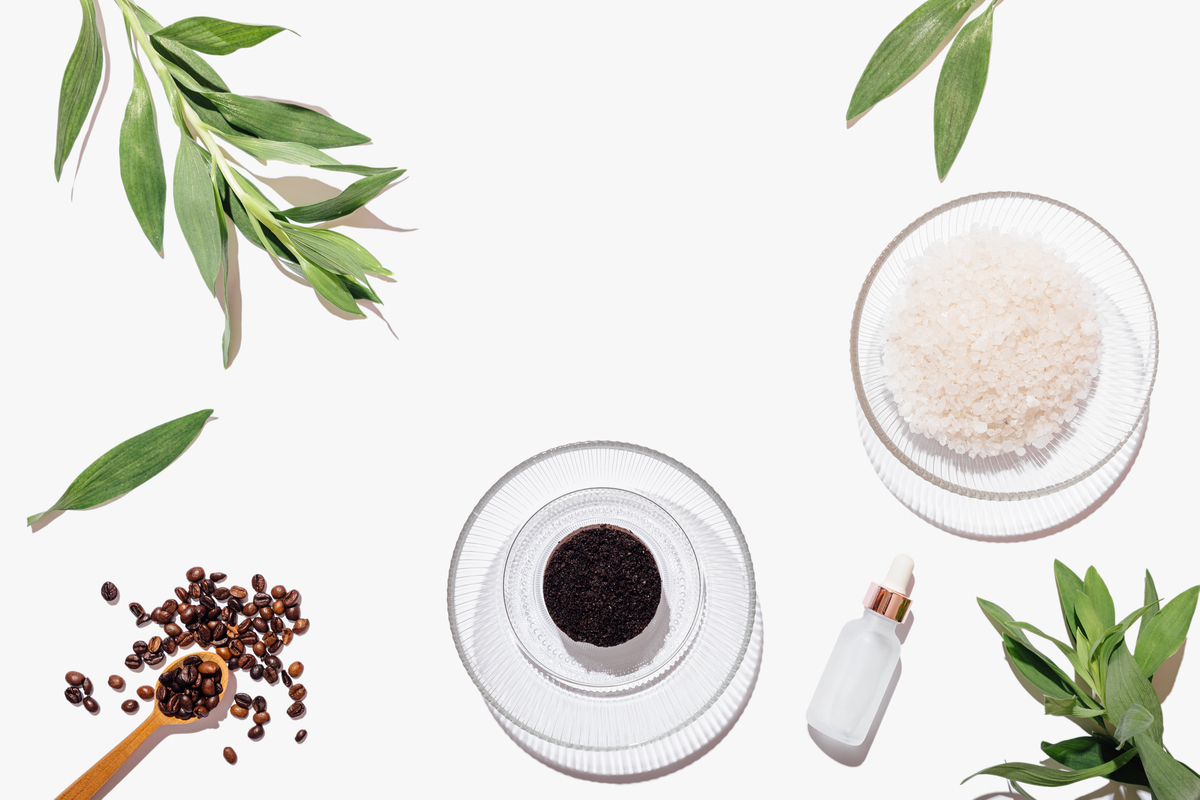Chemical peels are a cosmetic treatment that can help improve the look and feel of your skin. By applying chemical solutions to your face, neck and hands, you cause the top layer of skin to exfoliate and eventually peel off. The fresh new layer underneath is often smoother with fewer wrinkles and less skin damage.
Chemical peels are primarily used to treat:
- wrinkles and fine lines
- acne scars and other types of scars
- sun damage
- hyperpigmentation
- melasma
- uneven skin tone or redness
Types of chemical peels
Chemical peels are divided into three main categories – superficial peels, medium peels and deep peels – each of which can involve a number of different chemical treatments. The main types of chemical peels are:
- Glycolic acid peels
- Salicylic acid peel
- Jessner’s peel
- TCA peel
- Retinol peel
- Phenol peel
Superficial peels
Superficial peels are the mildest type of chemical peel and are used to treat mild skin discoloration, rough skin texture, and fine lines. The chemical solution used in superficial peels contains alpha-hydroxy acids (AHAs), such as glycolic acid, lactic acid, or fruit enzymes. These acids work by gently exfoliating the top layer of the skin, stimulating cell turnover, and promoting collagen production.
Glycolic acid peel
Glycolic acid peel is a type of chemical peel that uses glycolic acid, an alpha-hydroxy acid (AHA), to exfoliate the top layer of the skin. This peel is beneficial for treating fine lines, uneven skin tone, and texture. A glycolic peel is known to penetrate the skin deepest and so is one of the best peels for exfoliation. Glycolic acid’s small molecular structure allows it to penetrate deep into the layers of the skin and produce a healthy glow.
Glycolic acid peel is also known for its ability to stimulate collagen production, which helps to improve the skin’s elasticity and firmness.
A glycolic peel can come in varying intensities from superficial to deep, so be sure to have a full consultation with your skincare therapist or dermatologist before booking to get the peel that’s right for you.
[See which salons and treatment centers near you can offer glycolic acid peels]
Salicylic acid peel
Salicylic acid peel is another type of superficial peel that uses salicylic acid, a beta-hydroxy acid (BHA), to exfoliate the skin. This peel is particularly effective in treating acne-prone skin, as it helps to unclog pores and reduce inflammation. Salicylic acid peel is also beneficial for reducing hyperpigmentation and improving the skin’s texture.

Medium peels
Medium peels are more potent than superficial peels and are used to treat moderate skin discoloration, sun damage, and deeper wrinkles. The chemical solution used in medium peels contains trichloroacetic acid (TCA) or a combination of TCA and glycolic acid. Medium peels penetrate deeper into the skin, causing a controlled injury that triggers the skin to produce new collagen and elastin fibers.
Jessner’s peel
Jessner’s peel is a medium-depth peel that combines salicylic acid, lactic acid, and resorcinol. This peel is effective in treating moderate acne, hyperpigmentation, and sun-damaged skin. Jessner’s peel works by exfoliating the top layer of the skin and promoting cell turnover, which helps to reduce the appearance of fine lines and wrinkles.
TCA peel
Trichloroacetic acid (TCA) peel is a medium-depth peel that uses TCA to exfoliate the skin. This peel is beneficial for treating sun-damaged skin, hyperpigmentation, and acne scars. TCA peel works by penetrating the skin’s middle layers, which stimulates collagen production and improves the skin’s texture and tone. Superficial TCA peels have sometimes been called “lunchtime peels” since they can be performed in a short amount of time with minimal discomfort.
Retinol peel
As a form of vitamin A, retinol is used in skincare products to encourage the growth of skin cells. Its small molecular size means it’s able to penetrate into the deeper layers of your skin to encourage new growth and renewal. A retinol peel can also help to unclog the pores and reduce acne outbreaks by allowing the skin to heal.
Deep peels
Deep peels are the most intense type of chemical peel and are used to treat severe skin discoloration, deep wrinkles, and acne scars. The chemical solution used in deep peels contains phenol, a strong acid that can cause significant discomfort during the treatment. Deep peels penetrate deep into the skin, removing several layers of damaged skin cells and stimulating the production of new collagen fibers.
Phenol peel
Phenol peel is a deep peel that uses phenol, a strong acid, to exfoliate the skin. This peel is effective in treating severe acne scars, deep wrinkles, and hyperpigmentation. A Phenol peel works by deeply penetrating the skin’s layers and removing damaged skin cells. This type of peel requires a longer recovery time and is typically performed under anesthesia.

What to expect after a chemical peel
As you’d expect, the amount of recovery time depends on the chemical peel you get.
- For light chemical peels, recovery time is usually a few days up to a week, in which time your skin might look lighter or darker.
- For medium peels, you’re more likely to need up to a week to recover. You could experience some initial swelling and blotches, as well as some redness that might persist for several weeks.
- Deep chemical peels will cause more severe swelling and redness, in case cases even causing the eyelids to swell shut. It’s normal for the new skin to take around two weeks to develop and redness can last several months.
Some common post-treatment instructions include avoiding sun exposure, using gentle skin care products, and avoiding strenuous exercise for several days after the treatment.
Chemical peels are generally safe, but they do carry some risks, such as infection, scarring, and changes in skin color. It is essential to choose a licensed and experienced professional to perform the peel and to follow all post-treatment instructions carefully. They can evaluate your skin’s condition and recommend the most suitable type of chemical peel for your skin type and concerns.
So, while chemical peels are a highly effective treatment for improving the appearance of the skin, they are a serious treatment and so be sure to consult with a licensed and experienced professional before undergoing any chemical peel treatment to ensure the best possible results.
3 Comments
-
I think that you could be correct with this.
-
Chemical peel is an excellent treatment for me and helps me to have healthy, smooth skin.
-
I’m truly impressed by your insightful breakdown of the most common chemical peels! Your post is a goldmine of information – concise yet comprehensive. Thanks for shedding light on this important skincare topic. Kudos to you for making it easy for readers to understand and make informed decision!







